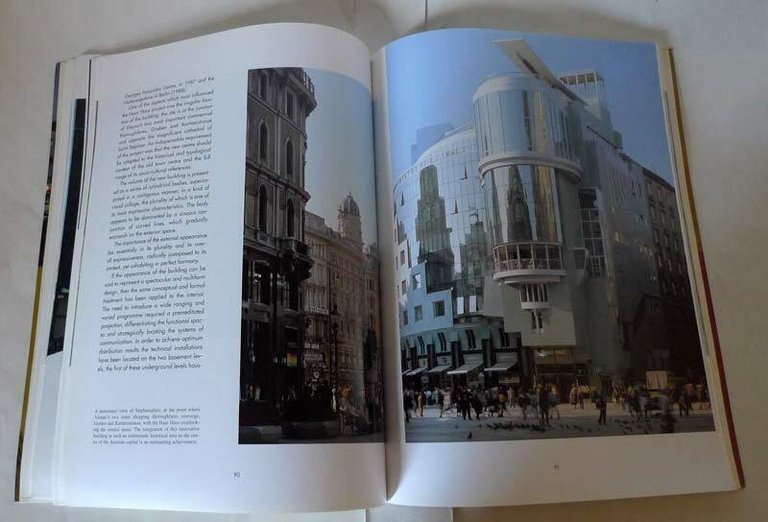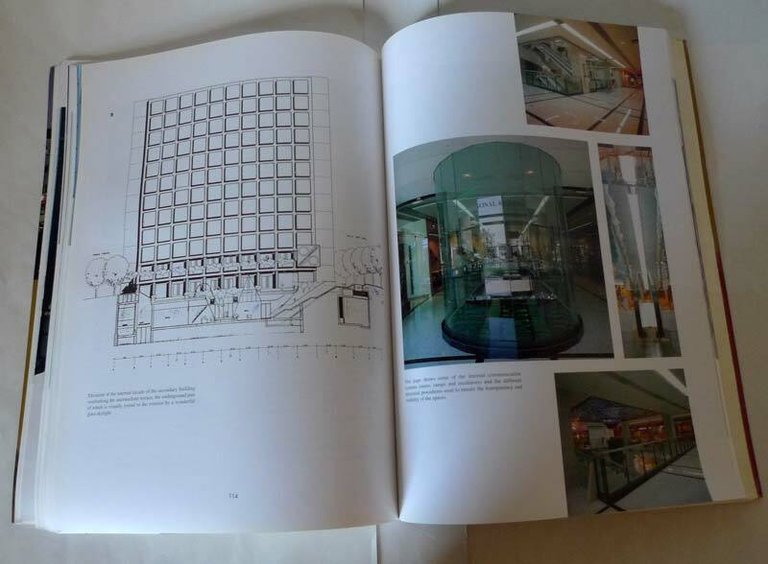




Periódicos
Cerver,COMMERCIAL SPACE,SHOPPING MALLS,'96[architettura,design,spazi commerciali
9,90 €
Modo Infoshop
(Bologna, Italia)
Los gastos de envío correctos se calculan una vez añadida la dirección de envío durante la creación del pedido. El vendedor puede elegir uno o varios métodos de envío: standard, express, economy o in store pick-up.
Condiciones de envío de la Librería:
Para los productos con un precio superior a 300 euros, es posible solicitar un plan de pago a plazos al Maremagnum. El pago puede efectuarse con Carta del Docente, Carta della cultura giovani e del merito, Administración Pública.
Los plazos de entrega se estiman en función de los plazos de envío de la librería y del transportista. En caso de retención aduanera, pueden producirse retrasos en la entrega. Los posibles gastos de aduana corren a cargo del destinatario.
Pulsa para saber másFormas de Pago
- PayPal
- Tarjeta de crédito
- Transferencia Bancaria
-
-
Descubre cómo utilizar
tu Carta del Docente -
Descubre cómo utilizar
tu Carta della cultura giovani e del merito
Detalles
Descripción
Francisco Asensio Cerver,
COMMERCIAL SPACE, SHOPPING MALLS.
Axis Books / Rotovision, senza data (1996),
brossura con sovraccoperta, 33x24 cm., pp.160,
numerosisime illustrazioni in nero e a colori,
testo in inglese,
ISBN: 2-88046-249-5
peso: kg.1,04
CONDIZIONI DEL LIBRO: ottime,
imperfezioni alla copertina
Shopping Malls
10 DM Passage Martin Strobl
24 Magasins Stockmann Gullichsen, Kairamo & Vormala
34 Saar-Galerie Volkwin Marg
50 Nordwest-Zentrum Rhode, Kellerman, Warwrowsky + Portner/RKW
62 Puerta de Toledo Market Ricardo Aroca, Martín Domínguez & Jesús Peñalba
78 Dallas Galleria Hellmuth, Obata & Kassabaum
88 Haas Haus Hans Hollein
102 New Agora Vittorio Mazzucconi
112 Pedralbes Centre 135 Arquitectos
126 Oliv Andenhof Gallery Hentrich-Petschnigg & Partner (HPP)
136 Montigalà Shopping Centre L35 Arquitectos
148 BePop Complex Jyrki Tasa
dal testo introduttivo:
The importance that shopping malls have
acquired has been caused by a series of soci-
ocultural and economic reasons that can be
grouped into two large blocks for analysis.
One is the importance of the concepts of trade
and the market as fundamental pillars of the
economic macrostructure of modern society,
and the other is the deep interrelation that has
arisen between, leisure and consumerism,
nowadays considered as more or less the
same attitude to life.
Shopping malls have become almost total-
ly autonomous buildings where the customers
can find everything they need without leaving
the mall, both in terms of consumption and of
collective leisure.
This functional extension has had a clear
effect on these large buildings' architectural
forms. Structural planning projects must con-
sider a greater number of requirements, not
just those dealing with traditional retail activ-
ities, where product display was combined
with the private logistic aspects. The physical
side is now much more important and archi-
tects must make an effort to strike a balance
between programmes with different require-
ments.
As a result, our cities can no longer absorb
the presence of these enormous temples of
trade, and so designers must turn to open
spaces free of any municipal or town-planning
restrictions. This new context explains the large
installations built in city outskirts, the logical
solution to the real scarcity of space. However,
it is necessary to point out that the investment
required is greater, because of the need to
create an infrastructure to guarantee the shop-
ping mall's autonomy and accessibility.
All these reasons are an attempt to bring
together the diversity of projects that appear
in this volume. Yet this book will show the
reader that the contemporary reality of shop-
ping malls cannot be bound by considerations
of a global nature. Thus, this book only seeks
to reflect the great diversity of proposals to be
found in the fascinating and complex field of
commercial architecture.

